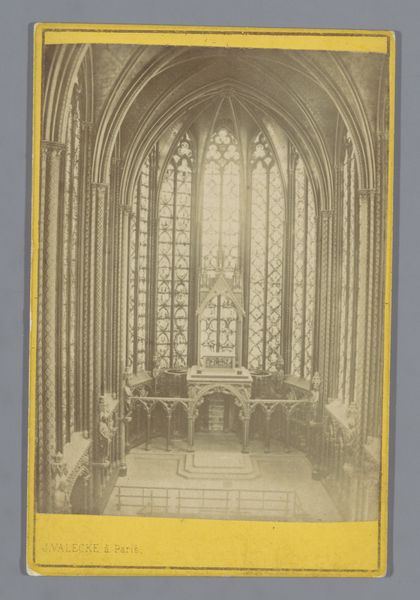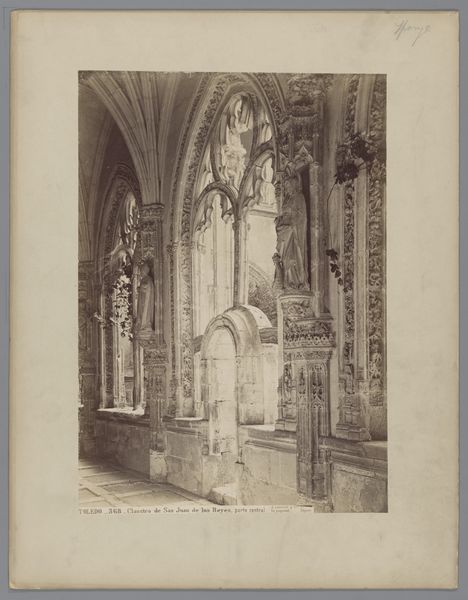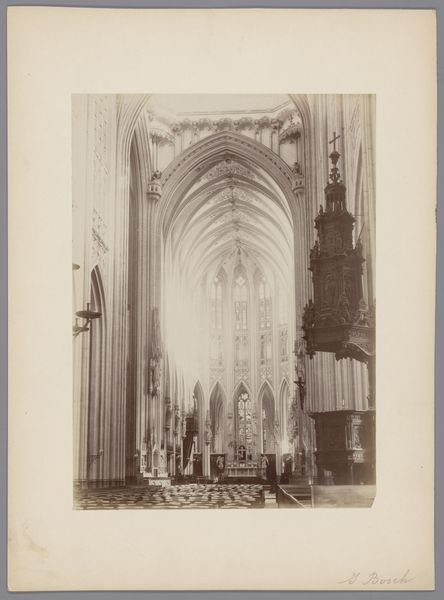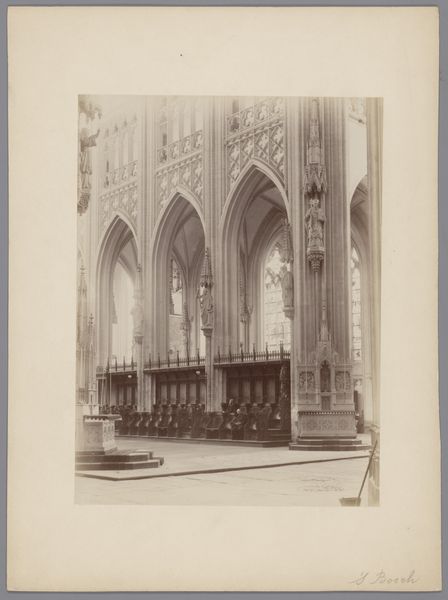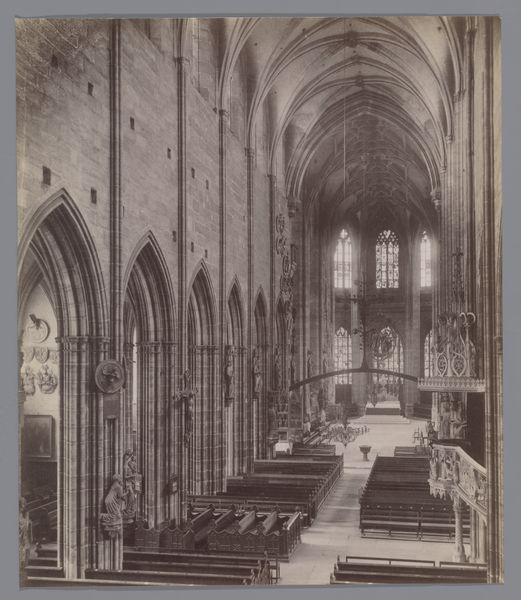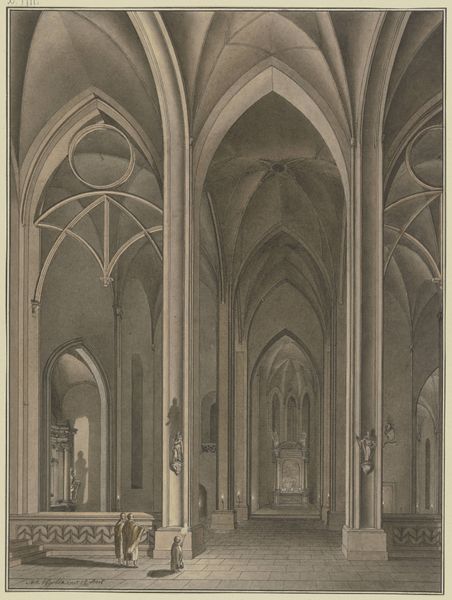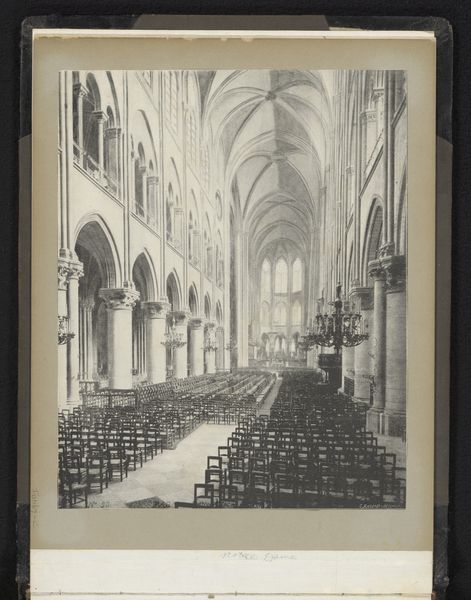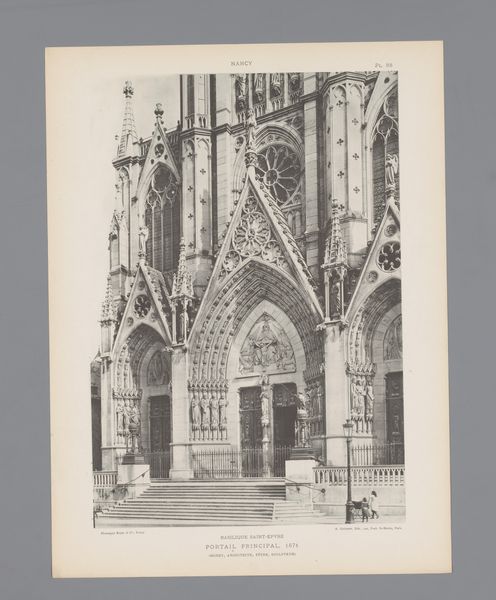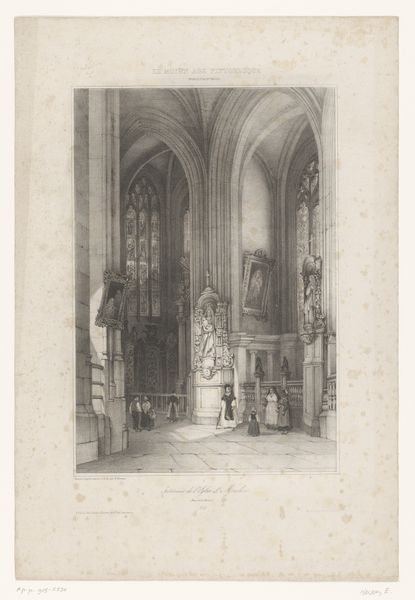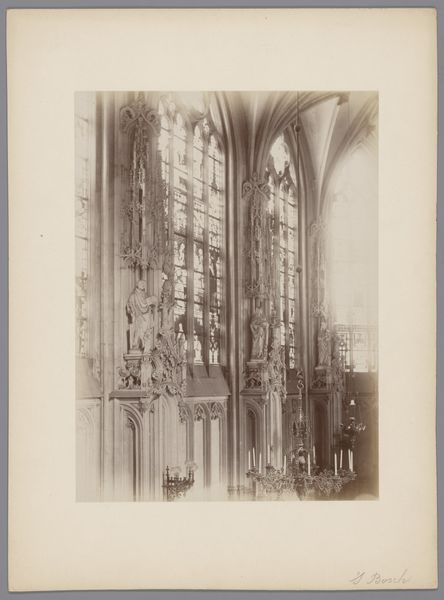
photography, gelatin-silver-print
#
medieval
#
landscape
#
photography
#
gelatin-silver-print
#
19th century
Dimensions: height 103 mm, width 65 mm
Copyright: Rijks Museum: Open Domain
Curator: Let's take a look at this gelatin silver print of the Hereford Cathedral interior. The photograph, dating roughly from 1856 to 1894, is attributed to Francis Bedford. Editor: Wow, it has such a cool, austere presence. I mean, look at the sharp detail in that rood screen. It's as if you could feel the chill radiating off the stone. Curator: Bedford was quite celebrated for his architectural studies, and this really captures the Victorian fascination with the medieval period. Note the intricate details in the stained glass and the ribbed vaulting. It represents a deliberate revival of Gothic forms and their associated values within Victorian society. Editor: That level of craftsmanship is really impressive. Think about the labour and resources poured into constructing something like that rood screen – the mining of the stone, the shaping, the transport, not to mention the artisan's skill... it’s the social history of labor made manifest! Curator: Absolutely. Cathedrals served as potent symbols of social order and spiritual authority, influencing civic life for centuries. Photography made that architecture available to the masses. This image and its mass dissemination had social and cultural impact. Editor: And that’s something. When you look closely at these photographic prints you can almost grasp a sense of that era's ambitions through the materials used in photography: the silver itself as commodity, and the industrial production necessary for making these photographs affordable. Curator: It's interesting how Bedford's photographs helped popularize architectural styles and disseminate notions about the past, reinforcing societal values through the image. Editor: Agreed. And thinking about who got to experience these cathedrals, physically and through photographs… well, access and representation were far from democratic at the time. It definitely raises questions about who had the means to commission, produce, and, ultimately, consume these images of grandeur. Curator: Exactly, and Bedford's lens inadvertently captures the hierarchies present even in artistic patronage and aesthetic preferences during his time. The work invites viewers to confront and dissect those inherent dynamics, regardless of the artwork's time period. Editor: It makes you realize the physical realities ingrained even in these seemingly straightforward images, which invites more complex conversations around labor, skill, and representation.
Comments
No comments
Be the first to comment and join the conversation on the ultimate creative platform.

